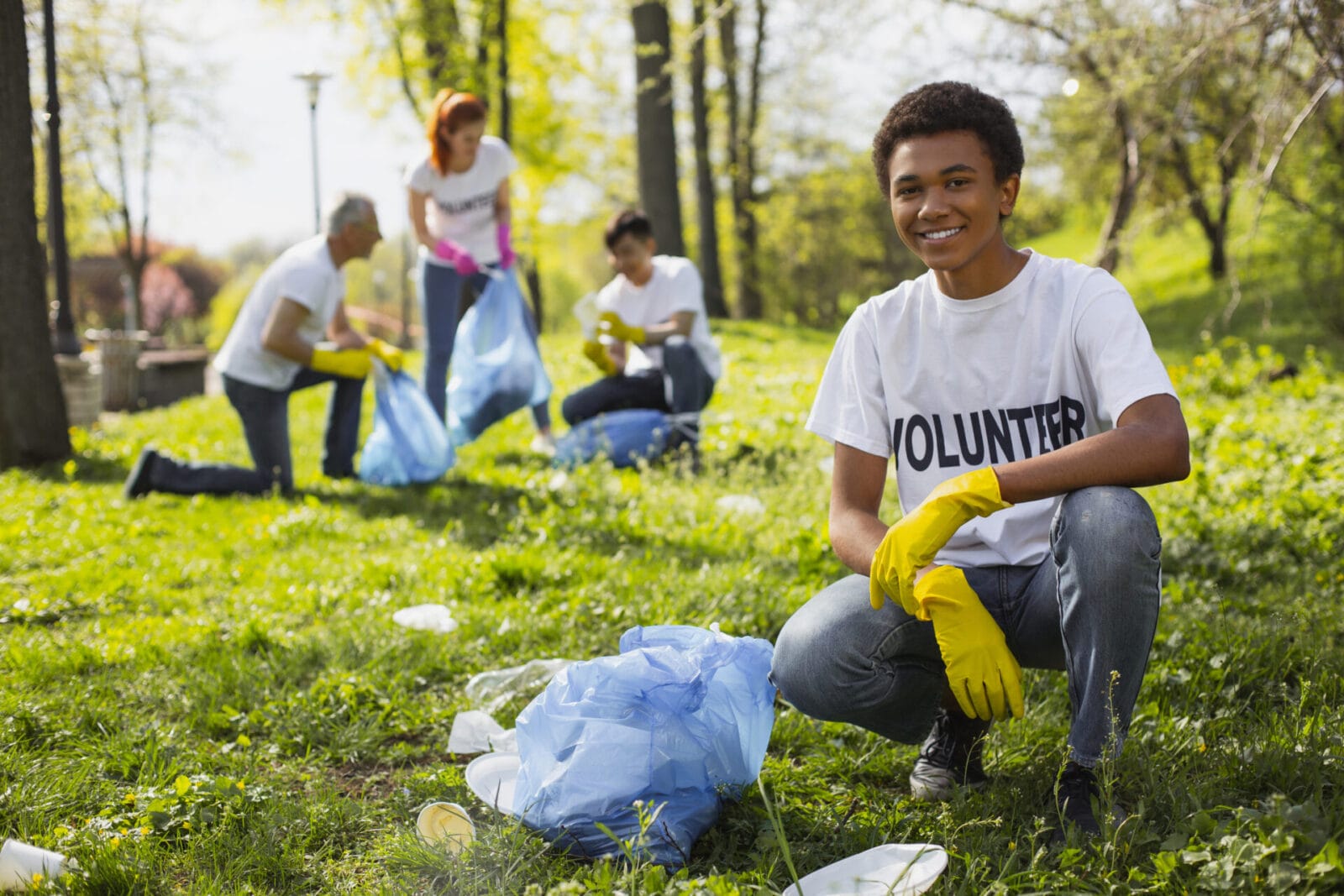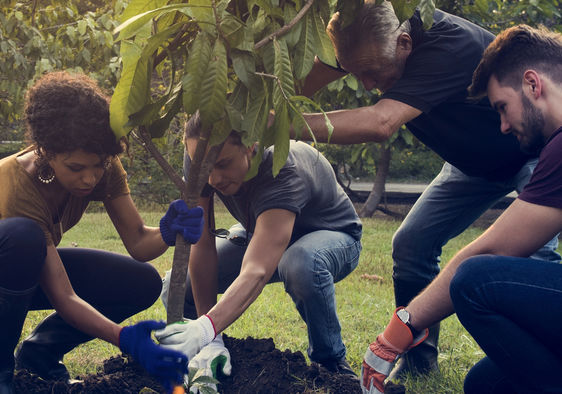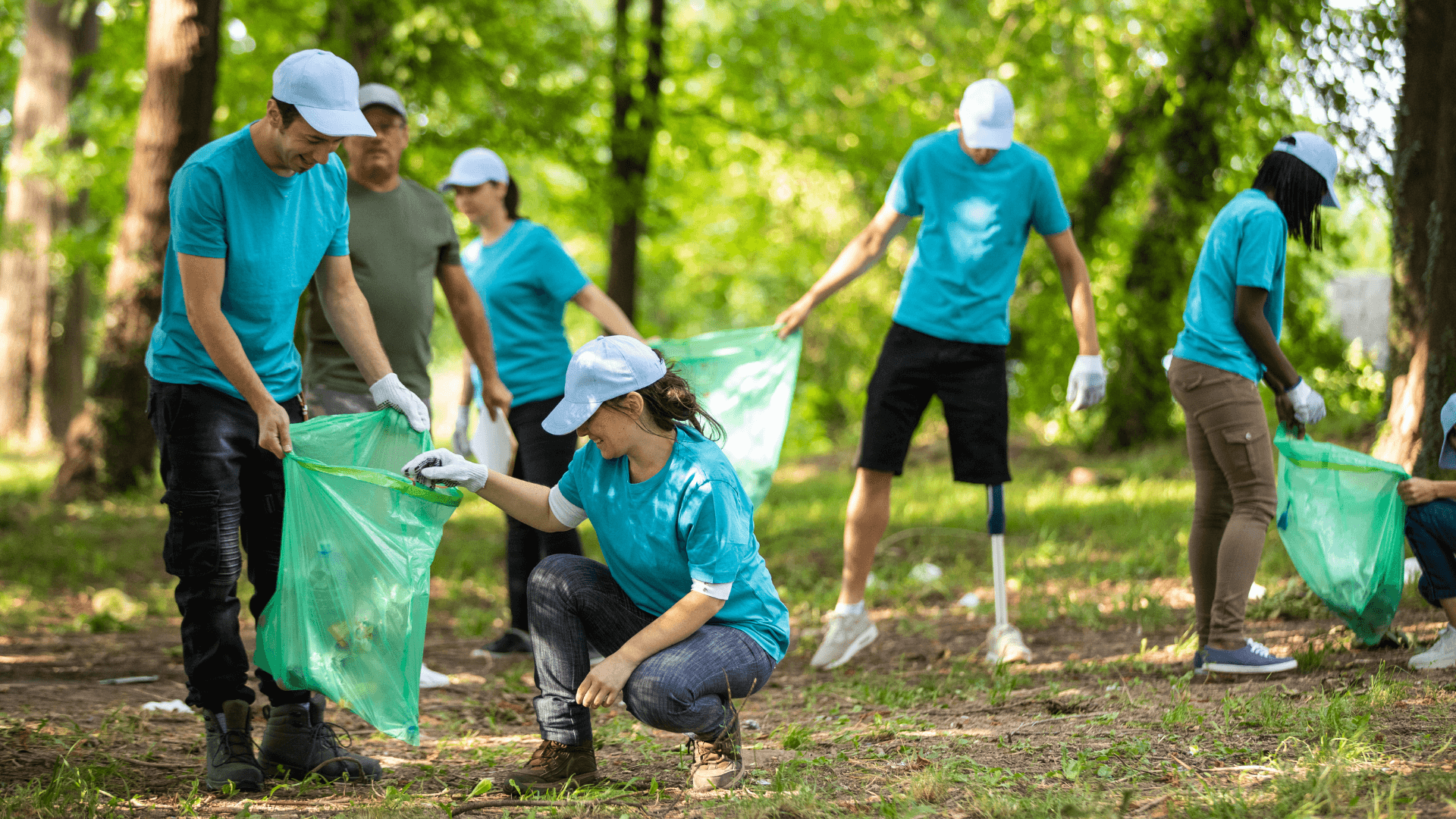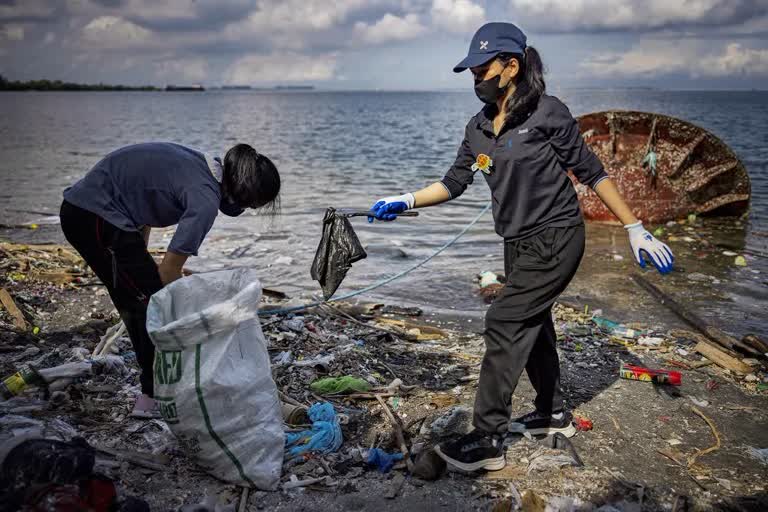Environmental Volunteer Opportunities - Start Making An Impact Today
The planet is facing increasing threats from pollution, deforestation, and climate change. While these challenges may seem overwhelming, taking action through environmental volunteer opportunities can make a real difference. Around the world, people are stepping up to restore ecosystems, protect wildlife, and promote sustainability.
Getting involved in environmental volunteering isn’t just about helping nature, it’s also a chance to connect with like-minded individuals, develop new skills, and contribute to a healthier future. From planting trees and cleaning up beaches to supporting conservation projects and advocating for green policies, there are countless ways to take part.
What Is Environmental Volunteering?
Environmental volunteering is the act of dedicating time, skills, and effort to initiatives that protect and restore nature. These initiatives may focus on preserving ecosystems, combating climate change, promoting sustainability, and supporting wildlife conservation. Volunteers contribute in various ways, from hands-on fieldwork such as reforestation and ocean cleanups to research, education, and advocacy efforts that push for environmental policies.
Projects can take place in urban and rural settings, with opportunities available across national parks, forests, beaches, and wildlife sanctuaries. Some programs require physical participation, such as tree planting or rescuing endangered animals, while others allow volunteers to contribute remotely through digital activism, fundraising, or educational outreach.
Who Can Volunteer?
Environmental volunteering is open to anyone who cares about nature and wants to make a difference. It welcomes people of all ages, professions, and backgrounds, with opportunities tailored to different skill levels and time commitments. Many well-known figures have also embraced environmental volunteer opportunities, using their influence to drive positive change.
Celebrities like Leonardo DiCaprio and Shailene Woodley not only participate in eco-friendly initiatives but also allocate their wealth to support environmental advocacy. Their financial successenables them to back crucial projects, demonstrating the impact that resources can have on protecting the planet.
- Students:Many young people engage in environmental volunteering to gain experience, fulfill academic requirements, or prepare for careers in sustainability, conservation, or environmental science.
- Professionals:Individuals with expertise in fields such as engineering, policy-making, communications, or education can contribute specialized skills to sustainability initiatives.
- Retirees:Many retired individuals find fulfillment in giving back to the planet, often using their experience to mentor younger volunteers or support long-term conservation efforts.
- Families and Community Groups: Many environmental projects welcome group participation, making it an excellent way for families, corporate teams, or community organizations to get involved.
- Remote Volunteers: Those unable to travel or commit to in-person work can still participate by supporting research, digital activism, or social media campaigns that spread awareness about environmental issues.
Types Of Environmental Volunteer Work
1. Conservation & Restoration
Conservation and restoration efforts focus on preserving natural habitats and rehabilitating damaged ecosystems. Volunteers take part in activities that help restore forests, wetlands, rivers, and other critical environments that support biodiversity. Tree planting and reforestation efforts help absorb carbon dioxide, prevent soil erosion, and provide habitats for wildlife.
Many organizations run tree-planting programs to combat deforestation and climate change. Habitat restoration involves removing invasive species, reintroducing native plants, and restoring damaged landscapes to their natural state. River and beach cleanups focus on removing plastic waste and other pollutants from rivers, lakes, and beaches to protect marine life and water quality.
Many environmental volunteering opportunities focus on preserving popular natural landmarks and mitigating the impact of tourism. This can involve hands-on work like trail maintenance, invasive species removal, or participating in clean-up campaigns. Such efforts are vital for maintaining the ecological balance and beauty of world-renowned sites, including places like Japan's iconic Mount Fuji, which faces challenges related to its popularity among visitors.
2. Wildlife Protection
Wildlife conservation programs aim to protect endangered species, restore animal populations, and prevent habitat destruction. Volunteers work directly with animals or support broader conservation efforts. Wildlife rehabilitation centers care for injured, orphaned, or displaced animals before releasing them back into the wild. Volunteers assist with feeding, cleaning enclosures, and monitoring animal health.
Endangered species monitoring programs track wildlife populations to help researchers understand their behaviors and develop conservation strategies. Volunteers may observe nesting birds, track big cats, or survey marine life. Anti-poaching support initiatives train volunteers to help protect wildlife from illegal hunting by setting up camera traps, monitoring wildlife reserves, or assisting rangers in conservation areas.
3. Climate Action
Addressing climate change requires a mix of advocacy, education, and practical action. Volunteers help spread awareness, support clean energy initiatives, and work on sustainability projects to reduce carbon footprints. Environmental advocacy and activism involve campaigning for stronger environmental policies, organizing climate strikes, and engaging in lobbying efforts to push governments and businesses toward sustainable practices.
Community education initiatives focus on teaching communities about climate change, conservation, and sustainable living practices through workshops, school programs, and public speaking.
4. Sustainable Living Initiatives
Sustainability projects encourage individuals and communities to adopt eco-friendly habits that reduce waste, conserve resources, and promote greener lifestyles. Volunteers contribute by organizing programs and teaching sustainable practices. Community gardening and urban farming projects provide fresh, organic produce while promoting food security and sustainability.
Volunteers help maintain gardens, teach others how to grow food, and support urban green spaces. Waste reductionand recycling programs focus on encouraging responsible waste disposal, upcycling, and composting to minimize pollution and landfill waste. Volunteers assist in setting up recycling stations and educating the public on reducing single-use plastics.
5. Scientific Research & Data Collection
Scientific research plays an important role in understanding environmental issues and developing conservation strategies. Volunteers assist researchers in gathering data on climate change, pollution, and biodiversity. Citizen science projects allow everyday people to collect environmental data, such as tracking bird migrations, monitoring air pollution, or recording weather patterns.
Biodiversity surveys involve volunteers identifying plant and animal species in specific ecosystems, which contributes to conservation planning and habitat protection. Pollution monitoring efforts require volunteers to collect water, soil, and air samples to help researchers measure pollution levels and identify areas that need urgent action.
Why Environmental Volunteering Matters
1. Personal Growth & Skill Development
Volunteering is an opportunity to learn new skills while making a difference. Many programs provide hands-on training in environmental science, sustainability, and conservation techniques. Volunteers often gain knowledge about climate change, biodiversity, and sustainable practices, which can be valuable for careers in related fields.
Beyond technical knowledge, volunteering also helps with personal growth. It improves communication skills, problem-solving abilities, and teamwork. Volunteers learn how to collaborate with different people, adapt to new challenges, and develop leadership qualities. For students and young professionals, this experience can enhance resumes and open doors to career opportunities in environmental organizations, research institutions, or governmental agencies.
2. Positive Environmental Impact
Every action taken by a volunteer contributes to restoring the planet. Reforestation programs, for example, play a critical role in reducing carbon dioxide levels, preventing soil erosion, and providing shelter for wildlife. Planting even a single tree can absorb carbon emissions over its lifetime, making forests a powerful tool against climate change.
Beach and river cleanups prevent plastic waste from harming marine life. Many sea animals, such as turtles and seabirds, mistake plastic for food, leading to serious injuries or death. Wildlife conservation efforts safeguard endangered species from extinction. Volunteers assist in protecting habitats, monitoring animal populations, and even rescuing injured wildlife.
3. Community & Social Benefits
Environmental volunteering brings people together and strengthens communities. Many projects rely on teamwork, encouraging volunteers to connect with others who share similar values. Working alongside people from different backgrounds fosters friendships and a sense of belonging.
Local volunteer programs empower communities by promoting sustainable living. When neighborhoods come together to clean up parks, plant trees, or implement recycling programs, they create cleaner and healthier environments for everyone. These efforts also encourage others to adopt eco-friendly habits, spreading awareness about sustainability.
Best Environmental Volunteer Opportunities
1. Local Opportunities
Local environmental volunteer programs allow individuals to make an immediate difference in their communities. These activities require little to no experience, making them accessible to students, professionals, and retirees alike.
Community Cleanups
One of the easiest and most effective ways to help the environment is by participating in cleanup events. Parks, streets, beaches, and rivers often suffer from littering, leading to pollution and harm to wildlife. Volunteers work together to collect plastic, paper, metal, and other waste materials, which are then properly disposed of or recycled.
In addition to improving the appearance of public spaces, these cleanups prevent toxic substances from entering soil and water sources. Many organizations also use these events to educate the public about reducing waste and adopting sustainable habits, such as using reusable bags and bottles. Even a few hours of work can have a lasting impact on the cleanliness and health of local environments.
Urban Gardening & Reforestation
Tree-planting programs and community gardens are powerful ways to improve air quality and increase green spaces in cities. Trees absorb carbon dioxide, provide shade, and support wildlife. Many environmental groups organize tree-planting drives to restore deforested areas, reduce urban heat, and prevent soil erosion. Volunteers help by planting saplings, watering trees, and ensuring their survival.
Community gardens provide fresh food for neighborhoods while promoting sustainability. These gardens often grow fruits, vegetables, and herbs, helping families access healthy food without relying on mass production. Volunteers assist with planting, weeding, composting, and educating others about organic farming methods. These projects also strengthen community bonds by bringing people together to work toward a common goal.
Wildlife Rehabilitation Centers
Many animal shelters and wildlife sanctuaries rely on volunteers to care for injured, sick, or orphaned animals. These centers take in creatures affected by deforestation, climate change, and human activity, providing them with medical care and rehabilitation before releasing them back into their natural habitats.
Volunteers assist by preparing food, feeding animals, cleaning enclosures, and sometimes even assisting veterinarians during medical procedures. Common species found in rehabilitation centers include birds, turtles, monkeys, and marine animals. This type of volunteering is ideal for animal lovers who want to gain experience in conservation and wildlife protection.
2. National & International Programs
For those who wish to travel or take part in larger conservation efforts, national and international volunteer programs provide an opportunity to work in some of the most breathtaking environments in the world. These projects often focus on protecting endangered ecosystems, preserving biodiversity, and promoting sustainable tourism.
National Park Services
Many governments offer volunteer programs within their national parks, where people help protect and maintain natural reserves. Volunteers assist in maintaining trails, removing invasive plant species, restoring damaged habitats, and educating park visitors about local wildlife and conservation efforts.
These programs allow participants to experience nature firsthand while learning about ecosystem management. Tasks vary depending on the park's needs and the time of year, but common activities include trail maintenance, tree planting, and wildlife monitoring. Some national parks also have programs where volunteers serve as tour guides, teaching visitors about the area's history and environmental significance.
International Conservation Projects
Many conservation organizations operate in different parts of the world, focusing on projects such as reforestation, coral reef restoration, and wildlife protection. These programs allow volunteers to travel to remote locations and assist in hands-on conservation work. Rainforest preservation projects focus on protecting tropical ecosystems that house countless plant and animal species.
Marine conservation programs work to restore coral reefs, clean up plastic pollution from oceans, and rescue injured sea creatures. Wildlife protection projects focus on endangered species like elephants, sea turtles, and big cats.
Eco-Tourism & Sustainability Initiatives
Eco-tourism combines travel with environmental conservation by encouraging responsible tourism practices. Volunteers help maintain nature reserves, support local businesses that prioritize sustainability, and promote cultural preservation. Many eco-tourism projects focus on using renewable energy, reducing plastic waste, and conserving water resources.
Some sustainability programs focus on educating travelers and local communities about responsible environmental practices. These initiatives include sustainable farming, clean energy projects, and the promotion of eco-friendly alternatives to harmful products. By participating, volunteers not only experience different cultures but also contribute to protecting ecosystems and reducing human impact on the environment.
3. Virtual Volunteering Options
For those who cannot travel or participate in hands-on projects, virtual volunteering provides an opportunity to support environmental efforts from anywhere in the world. These initiatives use technology to collect data, raise awareness, and push for policy changes.
Citizen Science Projects
Citizen science allows volunteers to assist researchers by collecting and analyzing environmental data. This can involve tracking climate changes, monitoring animal populations, or mapping deforestation. Many organizations provide apps or websites where volunteers can submit their observations, which are then used by scientists to study environmental trends.
Some projects involve analyzing satellite images, identifying species in wildlife photos, or reporting pollution in local areas. These contributions help researchers make informed decisions about conservation strategies and environmental policies.
Digital Activism & Awareness Campaigns
Online activism is a powerful way to support environmental causes. Volunteers can help by managing social media campaigns, creating educational content, and promoting petitions that call for stronger environmental policies.
Writing articles, designing infographics, and participating in online discussions can spread awareness about important issues like climate change, deforestation, and plastic pollution. Digital activism also plays a role in pressuring companies and governments to adopt sustainable practices.
How To Get Started With Environmental Volunteering
1. Identify Your Interests
The first step is to determine what type of environmental work excites you the most. Some people enjoy being outdoors, participating in activities like reforestation, trail maintenance, and beach cleanups. Others prefer working with animals in rescue centers or sanctuaries. If hands-on work isn’t your preference, you can engage in advocacy, research, or digital activism.
Think about what causes resonate with you. Are you passionate about protecting wildlife? Do you want to help reduce plastic pollution? Are you interested in climate change research? Identifying your interests will help you choose a volunteer opportunity that is both meaningful and enjoyable. One of the best ways to get started is to join a volunteer groupthat aligns with your passion. Connecting with like-minded individuals can enhance your impact, provide valuable learning experiences, and keep you motivated in your environmental efforts.
2. Research Organizations & Programs
Once you know what kind of environmental work you want to do, research organizations that offer volunteer programs. Many global and local groups provide opportunities to get involved in conservation efforts. Some well-known organizations include:
- The Nature Conservancy: Focuses on conservation projects, including reforestation and habitat restoration.
- World Wildlife Fund (WWF): Works on wildlife protection, anti-poaching initiatives, and marine conservation.
- Greenpeace: Specializes in environmental activism, policy change, and awareness campaigns.
- Ocean Conservancy: Dedicated to protecting marine life and reducing ocean pollution.
- National Park Services: Offers volunteer programs in protected areas, helping with conservation and education.
Apart from these global organizations, many local community groups and government agencies organize environmental projects. Checking with nearby conservation centers, environmental NGOs, and universities can help you find opportunities close to home.
3. Understand The Commitment
Different volunteer programs have different levels of involvement. Some activities require just a few hours, such as participating in a single cleanup event, while others involve long-term commitments, such as working at a wildlife sanctuary for weeks or months. Before applying, check the program’s requirements. Some key factors to consider include:
- Time Commitment: Determine whether the program fits your schedule.
- Physical Demands: Some tasks, like planting trees or maintaining hiking trails, require physical effort.
- Skills Needed: Certain roles may require specific knowledge, such as wildlife handling or scuba diving.
- Costs & Travel: International programs often require volunteers to cover expenses for travel, accommodation, and food. Some organizations offer free or low-cost options, while others may provide financial aid or fundraising support.
4. Apply & Prepare
Once you find a suitable volunteer program, complete the application process. Some organizations have an easy sign-up process for one-time events, while others require applications, background checks, or interviews for long-term positions.
Training may be provided depending on the nature of the work. For instance, wildlife rehabilitation programs may offer instruction on handling animals, while digital activism initiatives may guide social media campaigning. If you’re volunteering in remote locations, you may need vaccinations, visas, or special permits.
5. Stay Engaged & Make An Impact
Once you begin volunteering, stay committed and do your best to contribute. Be reliable, follow safety guidelines, and respect the environment and local communities. Even small efforts make a difference, whether you are collecting plastic waste, planting trees, or raising awareness online.
Volunteering is also an opportunity to learn. Pay attention to experts and professionals in the field, ask questions, and absorb as much knowledge as you can. Effective volunteer managementensures that everyone’s efforts are coordinated and impactful. Share your experience with friends, family, and social networks. Encouraging others to take action can amplify your impact.
People Also Ask
Why Should You Volunteer To Help The Environment?
Your contribution as an environmental volunteer could help ensure the long-term survival of a tropical rainforest or an endangered species. This is because you are actively participating in the conservation of that area or species.
What Is The First Step To Start Volunteering?
Decide which causes you care about. Identify the skills and knowledge you can offer. Create a volunteer resume. Determine how often you can volunteer.
What Are The Benefits Of Helping The Environment?
It gives us clean air, water, food, materials and space for recreation. Spending time in nature is good for our mental health. And if we do not take care of the planet, its climate and ecosystems, we undermine how our societies function, worsen our lives and, perhaps most directly, harm our own well-being.
Final Thought
Taking part in environmental volunteer opportunities is one of the most impactful ways to support the planet. Every effort, no matter how small, contributes to cleaner air, healthier ecosystems, and a more sustainable future.
The need for action has never been greater, and there’s no shortage of ways to get involved. By dedicating your time and skills to an environmental cause, you’re not just making a difference today, you’re helping to create a lasting legacy for future generations.




